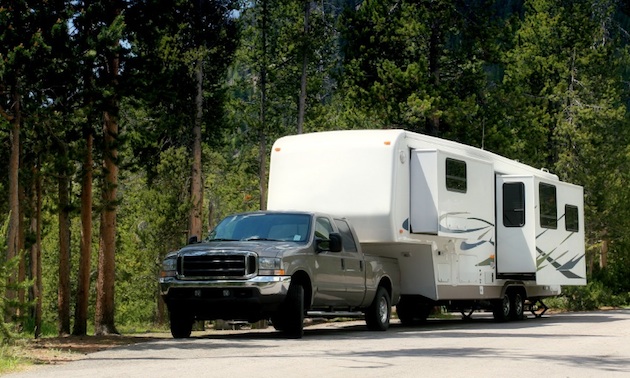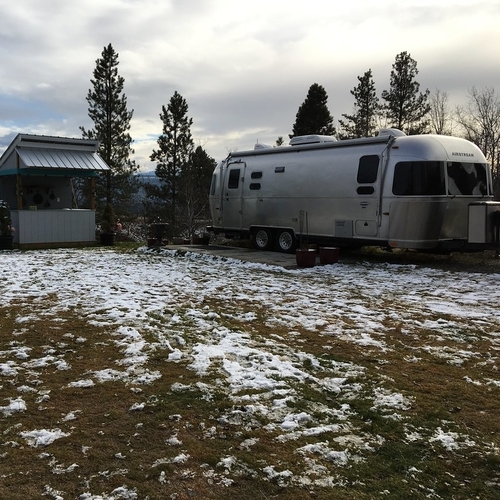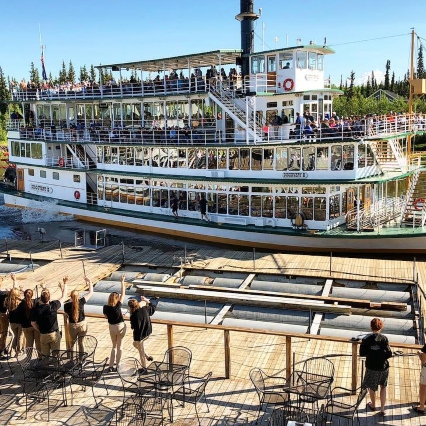A checklist for spring RV maintenance
Spend some time now keeping things in order to avoid any surprises during the camping season

Most of the tasks listed below will not require many tools or skills; however, safe practices need to be followed in some areas.
Exterior
- Check roof vents, skylights and accessories like the air conditioner, solar panels or satellite dish for damage.
- Check all roof sealants for signs of deterioration like cracking or lifting.
- Check all other exterior components like windows, mouldings, access doors and compartments to ensure a proper watertight seal.
- Lubricate all locks and hinges with a good-quality dry silicone spray.
- Operate any slide-outs to test for proper function and inspect the slide-outs' seal condition. Lubricate the slide-out mechanism with a dry lubricant for slide-outs.
- Check exterior metal or fibreglass siding for any punctures or delamination.
- Extend the awning to check the fabric condition for signs of damage, mould or mildew.
- A good exterior wash is advisable to remove dirt, grime and other contaminants. There are many chemicals, cleaners and protectants available to further enhance the finish of your RV and add resale value in the future.
Electrical
- The use of safety glasses and gloves is advised when working around a 12-volt battery. Be careful when lifting six-volt batteries.
- Check the 12-volt battery for proper fluid levels and follow up with a specific gravity/load test. These procedures can be done at your local RV or auto service centre.
- Inspect cables for damage or corrosion.
- Clean the terminals and add some dielectric grease to the posts.
- Ensure proper polarity has been used. (If black and white are used, black is positive. If red and black are used, then black is negative.)
- Check the shore power cord and plug for signs of damage from rodents.
- Clean the blades on the plug with steel wool.
- Ensure the 110-volt hot water heater element is off before plugging the unit in.
- Test the ground fault interrupter (GFI) plugs. A plug tester for this procedure is available at your local retailer.
Propane
- It is advisable to contact your local RV service centre and have a timed pressure drop and LPG regulator lockup test done on your RV to ensure proper operation of the LPG supply components and a leak-free piping system.
- Check the date stamps on the LPG tanks. They will need to be re-valved or replaced after 10 years of service.
- Ensure the appliances are turned off before turning the tanks on, and check to see that the LPG detector is functioning.
- Turn on the tanks and check for leaks with soapy water. If you smell propane, shut the tanks off and determine where the propane is leaking from. If the problem is discovered and solved with confidence, then proceed.
- Light a stove burner first to purge the air out, then operate all the appliances to check for proper sequences of operation.
Tires, wheels and undercarriage
- Always ensure a safe work area is provided with the use of wheel chocks and properly rated jack stands. Only work with a level and hard surface when inspecting these components.
- Check the tires' sidewalls and treads for signs of cracking or separation.
- Inflate the tires and torque the wheel lugs to the manufacturer’s specifications.
- Check shackles, U-bolts and springs for any signs of damage or excessive wear.
- Check the wheel bearings for excessive end play and consider a wheel bearing repack at least after every second season.
- Check the breakaway switch function.
- Check brake function and adjust if required.
Many RV dealerships offer a bearing repack service, during which all the above-mentioned components will be checked and adjusted. If you are unsure of the procedures and do not feel confident with the tasks, call your local RV service centre for a quote.
Water and waste systems
- Ensure that the water heater bypass valves are in the summer position.
- Check the anode rod if a Suburban hot water tank is provided. Replace the rod if over 70 per cent of the material is missing.
- Use the water pump or city water to remove the non-toxic antifreeze from the water pipes.
- After the water heater has filled, turn off the water to remove pressure. Open the pressure and temperature relief valve located on the outside of the water heater and drain the water until the flow stops; close the valve, then provide water pressure once again. This will create an expansion space within the water heater to cure a weeping pressure and temperature relief valve.
Tow vehicles and motorhomes
Additionally, a check-over of the tow vehicle or motorhome chassis is advised. Inspection of the hitch components, 12-volt electrical plugs and brake control function should be done on the tow vehicle, and in the case of the motorhome all fluid levels in the transmission, power steering pump, brake reservoir, radiator, etc. should be checked and filled to the manufacturer’s specifications. Depending on the mileage or hours of use with the generator, the oil and filters should be changed as well.
Although these tips do not cover every aspect or component in detail, I hope you find this checklist informative and helpful.







